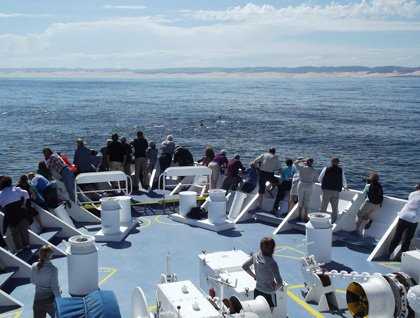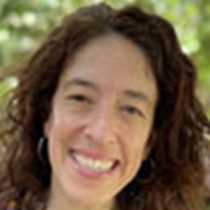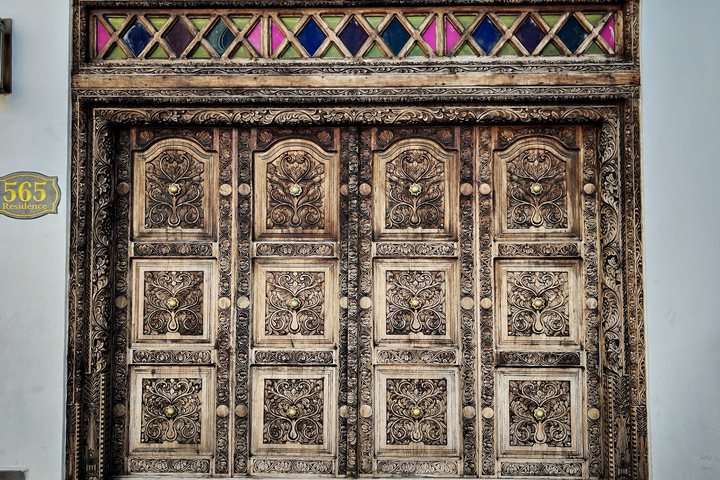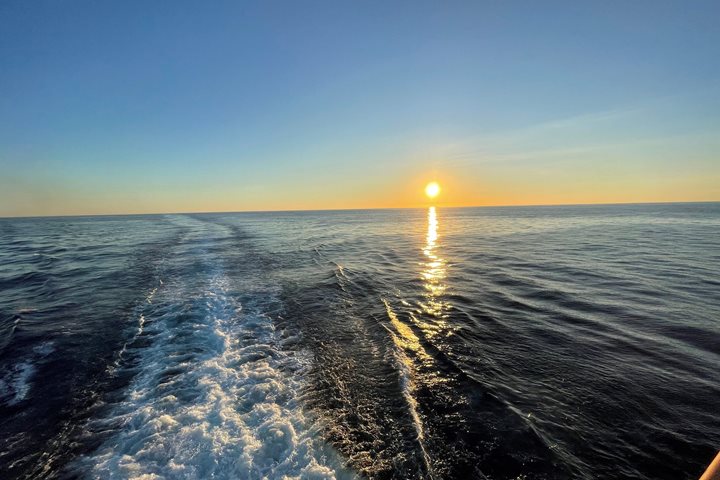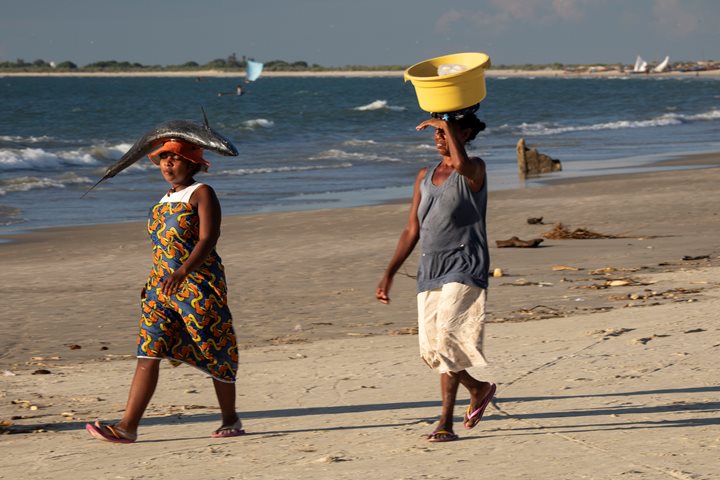Our day at sea began with two talks. I gave the first talk, entitled “Revolution in Song: Music & Resistance in Apartheid South Africa.” This presentation used songs to illustrate the role music played in resisting apartheid from 1948 through 1994 and beyond. Music communicated news during a time when it was very difficult for black journalists to write openly about apartheid in South Africa. It was also a way to create a feeling of solidarity and emotional bonds among South African people. Songs are a powerful way to communicate, because we can understand the sentiment even if we do not speak the language of the lyrics. Today, music continues to play an important cultural role in South Africa, as the country faces new challenges. The 46664 concerts, named after Nelson Mandela’s prison number, raise awareness of the HIV/AIDS crisis in the country and spread hope for treatment and cure.
Following this was a talk by Chris Rainier, National Geographic photographer and Fellow, entitled “Cultures on the Edge: Documenting the 21st Century.” This talk, with its stunning images, generated important questions and vibrant discussion. We talked especially about our role as visitors here to Southern Africa, and how we can best understand and appreciate the cultural experiences of this expedition.
After a lovely lunch in the open air on the back deck, National Geographic Orion continued her sail northward towards Port Elizabeth, along the Whale Coast. As we neared Bird Island, we had a great illustration of why this stretch of sunny South African coastline is thus named. We came upon a spectacular feeding frenzy and had one of our first whale sightings of the expedition! The first animal spotted off the port side was a small baleen whale, and we all rushed out to the decks to have a look. Then National Geographic Orion nosed her way towards the real action, a great gathering of wildlife—fish, mammals, and seabirds—near to Bird Island, all of them feeding, probably on a sardine run beneath the waves.
We had a fantastic gathering of species: common dolphins swam gracefully in pairs and threes, often quite close to the ship, while the smaller spinner dolphins did spectacular leaps for us. There were also a number of African penguins swimming like bullets and looking for fish. Above, Cape gannets and shearwaters flew, dipping into the waves to eat delicious seafood as well. And finally, what our naturalist David Cothran believed was a small pod of Brydes whales. These graceful creatures swam slowly in their pod, and we had great views of their spray and fins as they came up to breathe.
After that fabulous display of wildlife, we returned to our comfortable lounge for two more talks. The first, “Don’t Get Buried” by David Cothran, naturalist and photo instructor, offered instruction on what may be the most useful skill to have on any expedition—organizing photos! David explained step-by-step how to keep images in good order to find them again later on, including the rationale behind iPhoto’s organizational strategy and how to manage photos by date, time, subject, and location. Everyone who attended will return home with their spectacular photos nicely arranged and ready to share with family and friends.
Finally, we had the pleasure of a talk by Carl Safina, our Global Perspectives guest speaker. “The Ocean and Us” addressed the important topic of how we can improve our relationship with both nature and other human beings. As Carl so beautifully phrased it, “nature and human dignity require each other.” He gave us an inspiring hour of images and ideas, helping us to consider how, despite the challenges we face in our relationship with nature, we can each make our own contribution to, as he put it, “heal the world.”
This evening as we sleep, National Geographic Orion will sail towards the Wild Coast. This part of South Africa was one of the former homelands during the apartheid regime, called the Transkei. It is home to many Xhosa people, including at one time in his youth, Nelson Mandela.

